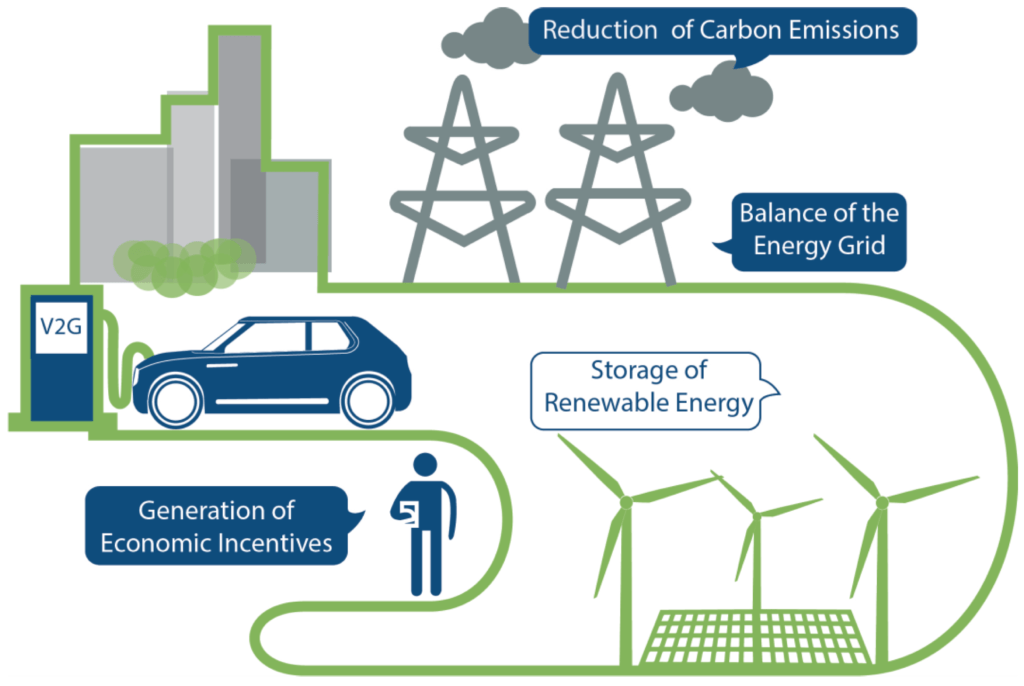Electric vehicles (EVs) are more than just cars. They are powerful computers on wheels. And the chargers that power them are getting a major upgrade. They are no longer simple plugs in a wall. They are becoming smart, connected hubs that talk to your car, the cloud, and the power grid.
This massive change is creating a new world of energy. We are moving toward a future of Vehicle-to-Grid (V2G) technology. V2G allows EVs to not only take power from the grid but also give it back. This turns every car into a small, mobile power plant.
This evolution is reshaping everything. It changes how we manage energy, how we make money from our cars, and how we build smarter cities. Let’s explore how this connected technology is revolutionizing the EV charging experience by 2025 and beyond.
I. Technological Symbiosis: Triple Evolution of Charging Experience via Data Flow
The operational logic of Tesla’s “Charge-on-Demand” system reveals the core innovations of next-gen charging technology:
- Dynamic Charging Curve Generation: Syncing with the user’s calendar (e.g., a 300 km business trip the next day) and real-time battery health (SOH) data to calculate optimal charging windows. 2025 tests show a 27% reduction in battery degradation rates.
- Energy Consumption Prediction Engine: Using spatiotemporal convolutional neural networks (ST-CNN) to integrate 40+ dimensions of data (driving history, weather forecasts, road gradients), achieving a 2.8% error margin in charging demand forecasting.
- Technology Spillover: This model has birthed “Charging-As-A-Service” (CaaS), exemplified by NIO’s Battery-as-a-Platform, which connects 2,150 commercial parking chargers for cross-brand seamless billing.
1.2 Vehicle-Charger-Cloud Data Triangle: Redefining Energy Interaction Protocols
Under the ISO 15118-20 framework, charging is evolving into autonomously negotiated digital contracts:
- Frictionless Payment Breakthrough: IONITY’s blockchain settlement network in Europe, based on vehicle digital certificates (VIN-bound) and charger PKI systems, has slashed billing disputes from 15% (2022) to 1.2%.
- Quantum-Resistant Security: Hardware Security Modules (HSM) enable end-to-end encryption, maintaining transaction integrity via NIST post-quantum cryptography standards.
- User Value Leap: BMW i7 owners report 54 annual hours saved on charging—equivalent to 2.25 extra workdays.
II. Grid Synergy: V2X Technology Unlocks Trillion-Dollar Flexibility Markets
III. Operational Revolution: Digital Twins Reshape Charging Infrastructure
As engineers in Helsinki guide Melbourne technicians via AR glasses to replace charging modules, the spatiotemporal boundaries of maintenance systems dissolve.
3.1 Predictive Maintenance Systems
- Failure Pre-Diagnosis: Converting charger current waveforms into 2D images via Gramian Angular Fields (GAF), convolutional neural networks predict failures 72 hours in advance with 98.3% accuracy.
- OTA Upgrade Revolution: Huawei’s HiCharger with 5G URLLC deploys 200 MB firmware globally in 9 seconds—23x faster than 4G.
3.2 Supply Chain Resilience Innovations
Modular design rewrites hardware lifecycles:
- Hot-Swap Power Modules: silicon carbide components enable live replacements, slashing maintenance from 4 hours to 18 minutes.
- Digital Twin Validation: MCD virtual prototypes cut product development cycles from 24 to 14 months.
IV. Security Warfare: The Dark Forest of Smart Charging
When white-hat hackers demonstrate network breaches via charging guns at DEF CON 32, security battlegrounds expand to every charging port.
4.1 Hardware-Level Defense Evolution
- Trusted Execution Environments: ARM TrustZone isolates secure/normal worlds in charger MCUs, protecting keys even if OSes are compromised.
- Anomaly Traffic Hunting: Palo Alto Networks’ AI detects OCPP man-in-the-middle attacks in 300 μs.
4.2 Data Sovereignty Deconstruction
EU’s Electric Vehicle Data Act drives compliance innovations:
- Federated Learning Frameworks: BMW-Shell charging alliances enable joint modeling in encrypted data spaces without cross-border data transfer.
- Differential Privacy: Laplacian noise injection balances data utility and GDPR compliance.
V. 2030 Vision: The Third Identity Revolution of Chargers
As Dubai embeds dynamic wireless charging coils in roads, charging infrastructure transcends physical constraints.
5.1 Ultra-Fast Charging & New Energy Interfaces
- Road Charging Systems: Electreon’s conductive concrete enables in-motion charging, eliminating range anxiety for Model S in trials.
- PV-Storage-Charging Integration: Huawei’s hybrid systems achieve 75% energy self-sufficiency at charging stations.
5.2 From Energy Nodes to Digital Ecosystem Gateways
- Edge Computing Hubs: XPeng stations with NVIDIA Orin chips manage charging loads while updating autonomous vehicles’ HD maps.
- Carbon Asset Gateways: Blockchain-based charging carbon footprint systems enable NIO users to trade personal carbon credits on Shanghai Environment Exchange.
Industry Roadmap
- 2025-2026: Global standardization of V2G protocols and virtual power plant rules.
- 2027-2028: Co-deployment of dynamic wireless charging and autonomous driving roads.
- 2029-2030: Charging networks become the energy neural networks of urban digital twins.
In this symphony of hardware digitization and software materialization, EV chargers have evolved into neural nodes of the energy internet. Their value metric shifts from “kWh delivered” to “data flow density.” Enterprises redefining chargers as “mobile energy operating systems” will dominate the 2030 energy landscape.
Sources
V2G Market Analysis & Pilot Programs: U.S. Department of Energy, Federal Energy Management Program (FEMP). (2024). Managed and Bidirectional Charging.
Enel X Way VPP Solutions: Enel North America. (2025). Demand Response.
Cybersecurity in EV Charging: National Renewable Energy Laboratory (NREL). (2025). Cybersecurity for Electric Vehicle Grid Integration.
Electreon Wireless Charging Technology: Electreon. (2025). Our Wireless Charging Technology.

